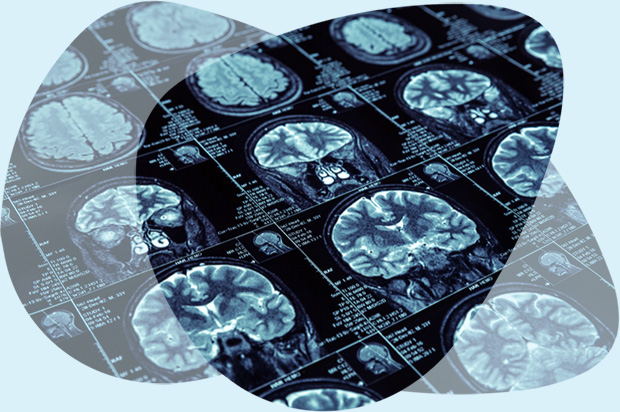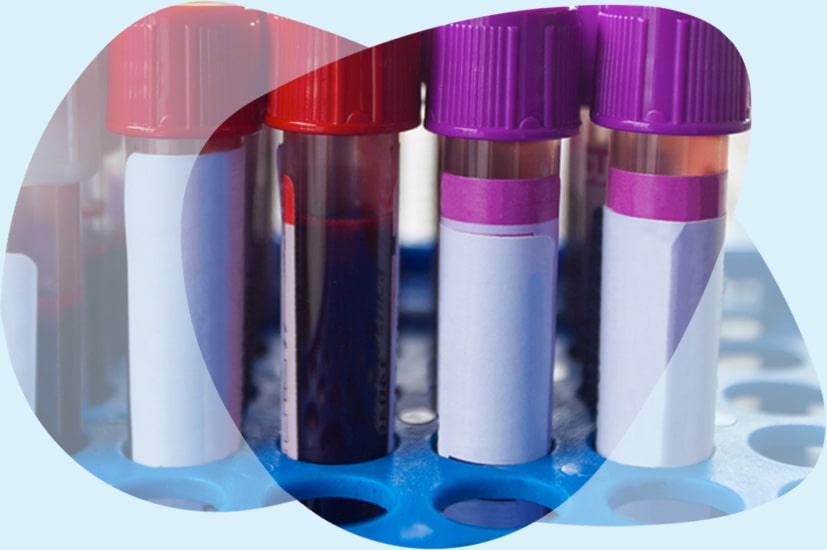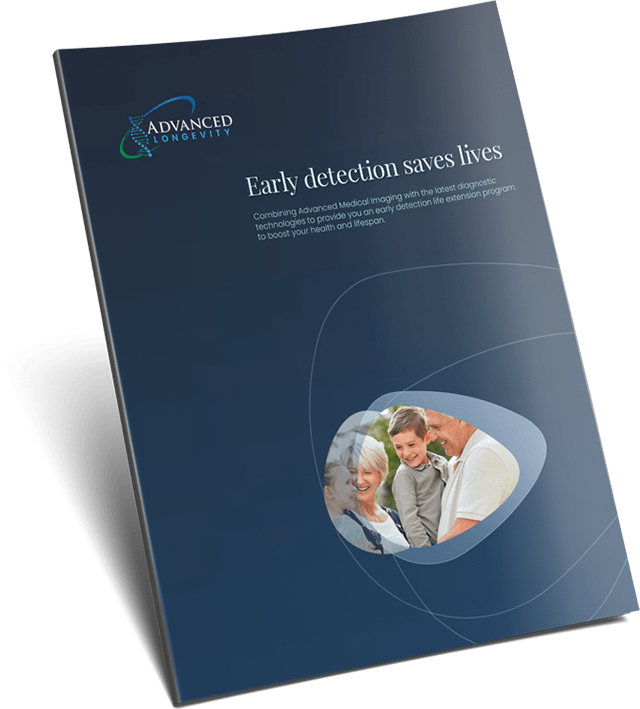Full Body Scans
We are here to help you stay ahead of potential health issues. That’s why we offer a comprehensive full body scan in just five minutes! Our state-of-the-art technology can quickly detect early signs of deadly diseases, so you can make informed decisions about your health and well-being.


Discover the Power of Full Body Scans at Advanced Longevity
At Advanced Longevity, we understand the importance of staying ahead of potential health issues. That’s why we include annual full body scans, a quick and non-invasive procedure designed to provide a comprehensive view of your internal health.
In just five minutes, our state-of-the-art technology can detect early signs of deadly diseases, giving you the knowledge you need to make informed decisions about your well-being
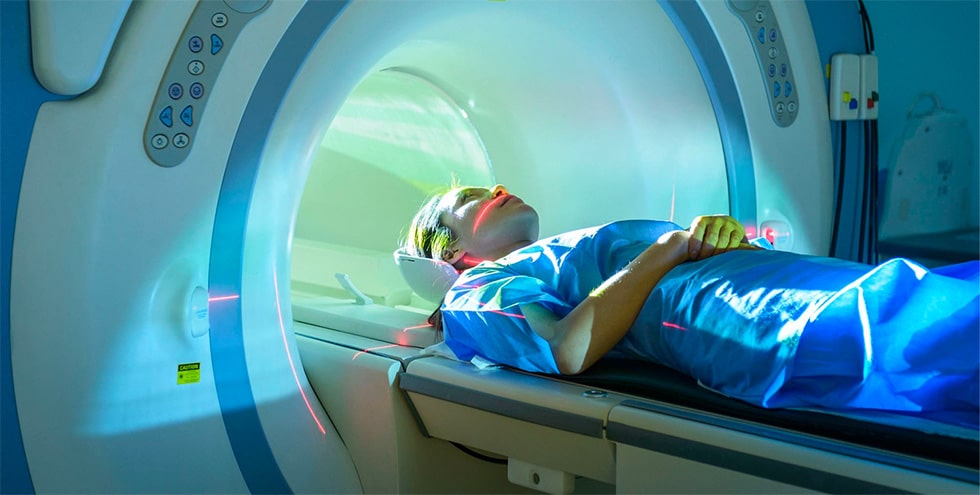
Why Annual Full Body Scans Are Important
- Early detection is key: Some of the deadliest diseases, like heart disease and cancer, do not show symptoms until it’s too late. Your body often compensates for years before revealing any signs of a problem.
- No “check engine light” for the heart: The first sign of a heart attack is often the heart attack itself, and 10-15% are fatal and 20% asymptomatic. Early detection can be lifesaving.
- Improved cancer survival rates: The survival rate of cancer found at an early stage is typically dramatically higher. However, waiting until symptoms appear can drastically reduce the chances of survival. Early detection leads to more effective treatments.
What’s Involved in the Scan
- Comprehensive examination: The scan assesses your major organs, including your heart and major vessels, looking for signs of many types of cancer, cardiovascular disease and much more.
- Detailed organ analysis: The scan also evaluates the thyroid, kidneys, prostate, uterus/ovaries, liver, pancreas, and all your major organs, providing a comprehensive picture of your internal health.
How to Prepare and What to Expect:
- Quick and comfortable: The best part of this scan is that it only takes 5 minutes. You can remain fully dressed, and there are no needles, dyes, or invasive procedures involved.
- Simple process: You’ll lie down and the motorized table will move you in and out of the scanner while images are rapidly obtained. Only a few minutes and you are all done!

Take control of your health journey with Advanced Longevity’s annual full body scans. Experience the benefits of early detection and unlock the potential of your health today.
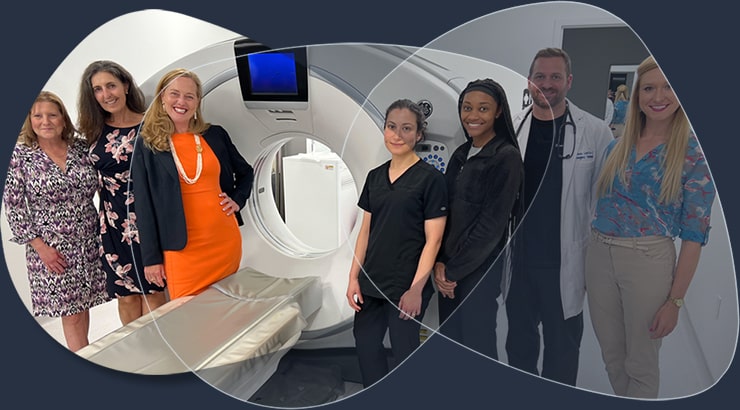
Don't leave your health to chance!
Thousands of people a year die needlessly simply because they did not know what is going on in their own bodies.
Schedule a call today
Get in touch with us free of charge to learn how Advanced Longevity can help you improve your health and the lives of your loved ones
Lifetime Benefits of AL Full Body Scans
Embrace the advantages of the Advanced Longevity Full Body Scan package throughout your lifetime. With our state-of-the-art technology, you can secure a better understanding of your health and make proactive decisions for a brighter future.
Key Benefits of Annual Full Body Scans:
- Establish a baseline: Your first scan serves as a foundation for monitoring your health throughout your life. Your initial scan creates a reference point for future examinations.
- Early detection for better outcomes: If any issues are detected, early discovery almost always leads to a more favorable outcome.
- Continuous monitoring: Regular scans are crucial, especially if you have a family history of diseases, as there’s a high probability of developing a health condition at some point in your life.
- Ongoing care: We are committed to taking care of you as issues may appear in your scans, ensuring that you receive the best possible support on your wellness journey.
Invest in your health with Advanced Longevity Full Body Scans and experience the lifelong benefits of proactive health monitoring.

Frequently Asked Questions
What Is A Body Scan?
Advanced Longevity uses CT technology for body scans. Our cutting-edge screening method provides an overall assessment of your physical health to help you establish a baseline for your general wellness.
During this scan, the machine captures detailed images from your shoulders to your thighs that include scans of your chest, coronary arteries, abdomen, and pelvis.
After your scan, our licensed radiologist and medical doctor review your images to look for signs of disease or abnormalities in your:
- Lungs
- Liver
- Spleen
- Gallbladder
- Pancreas
- Kidneys
- Prostate gland
- And more
A body scan can also capture irregularities in your spine.
What Can A Body Scan Detect?
What Can I Expect During A Body Scan?
After your body scan, our board-certified radiologist reads your images and prepares your report. This summary outlines any issues that may require additional action.
Pancreatic Cancer
Pancreatic cancer is difficult to find early. The pancreas is deep inside the body, so early growth cannot be seen or felt by a physical exam. Patients usually have no symptoms until the cancer has already spread to other organs.
Pancreatic cancer has increased survival chances if detected early. The five-year survival rate for pancreatic cancer is only 4%, but if detected at Stage 1, the survival rate can be as much as 10 times better!
A CT Scan can generally detect early-stage cancers long before they ever cause symptoms. At these stages, removal or treatment is usually very successful.
What is Pancreatic Cancer?
Pancreatic cancer begins in the tissues of your pancreas, which lies beneath your stomach. This organ releases enzymes that aid digestion and hormones that help manage your blood sugar.
Pancreatic cancer occurs when cells in your pancreas develop mutations in their DNA. These mutations cause cells to grow uncontrollably and to continue living after normal cells would die. These cells accumulate and can form a tumor.
Untreated pancreatic cancer spreads to nearby organs and blood vessels.
Pancreatic cancer occurs in stages:
- Stage 0 – Pancreatic cancer is limited to a single layer of cells in the pancreas. Naturally, this is the best time to detect this disease.
- Stage I –Pancreatic cancer is limited to the pancreas but has grown to less than 2 centimeters across or greater than 2 centimeters.
- Stage II -Pancreatic cancer has grown outside the pancreas, or has spread to the nearby lymph nodes.
- Stage III – The tumor has expanded into nearby major blood vessels or nerves but has not metastasized.
- Stage IV – Pancreatic cancer has spread to distant organs.
Risk Factors for Pancreas Cancer
- Family history of cancer
- Chronic inflammation of the pancreas
- Diabetes
- Family history of genetic syndromes that can increase cancer risk
- Smoking
- Obesity
- Older age, most are diagnosed after 65
Symptoms of Pancreatic Cancer
- Weight Loss
- Fatigue
- Jaundice
- Pain in the abdomen or lower back
- Bowel obstruction
- Fluid in the abdomen or nausea
The CT Body scan at Advanced Longevity is the single most effective technology available to simply and non-invasively detect signs of pancreatic cancer.
What is an Abdominal Aortic Aneurysm?
An Abdominal Aortic Aneurysm often grows slow and usually shows no symptoms. This makes it difficult to detect. Many start small and stay small expanding over time, while others expand quickly.
If an aortic aneurysm were to tear or rupture, this can lead to life-threatening internal bleeding. Generally, the larger the aneurysm and the faster the aneurysm grows, the greater the risk of rupture.
Risk Factors for Abdominal Aortic Aneurysm
- Age, 65+
- Tobacco use
- Male
- Caucasian
- Family history
- Atherosclerosis – the buildup of fat and other substances that can damage the lining of the blood vessel
- Other aneurysms
- High blood pressure
Symptoms of Abdominal Aortic Aneurysm
You can have an Abdominal Aortic Aneurysm with no signs or symptoms.
- A pulsating feeling near the navel
- Deep, constant pain in your abdomen or on the side of your abdomen
- Back pain
Symptoms outside of the chest
- Loss of appetite or unexplained weight loss
- Muscle wasting
- Fatigue
- Headaches, bone or joint pain
- Bone fractures not related to accidental injury
- Neurological symptoms, unsteady gait or memory loss
- Neck or facial swelling
- General weakness
- Bleeding
- Blood Clots
People who have Abdominal Aortic Aneurysms run the risk of blood clots. Small blood clots can develop in the area of the aortic aneurysm. If a blood clot breaks loose, it can cause pain or block the blood flow to the legs, toes, kidneys, or abdominal organs.
The CT body scan at Advanced Longevity is the most effective technology available to simply and non-invasively detect signs of Abdominal Aortic Aneurysms.
What is a Thoracic Aortic Aneurysm?
The aorta is the largest blood vessel in the body and although it is tough and durable, its walls can weaken and bulge. This is an Aortic Aneurysm and can cause blood to leak into your body.
Aortic Aneurysms can also burst or force blood flow away from your organs and tissues causing problems such as heart attacks, kidney damage, stroke, and death.
Thoracic Aortic Aneurysms occur in the chest and are monitored on an annual basis to assess for growth. Often, they show no symptoms until the aneurysm becomes large or bursts.
Risk Factors for Thoracic Aortic Aneurysm
- Genetics
- High blood pressure
- Infection
- Plaque buildup in your arteries
- High cholesterol
- Sudden traumatic injury
Symptoms of Thoracic Aortic Aneurysm
- Chest or back pain
- Difficulty breathing or swallowing
- Shortness of breath
- Coughing
- Hoarseness
If you are experiencing any of these symptoms, it is important to diagnose them quickly.
The CT body scan at Advanced Longevity is the most effective technology available to simply and non-invasively detect signs of a Thoracic Aortic Aneurysms.
Call Advanced Longevity today and begin your journey to a healthier, happier you.
Other Assessments
- Thyroid
- Internal Organ Screening
- Stomach
- Liver
- Spleen
- Gall Bladder
- Kidneys
- Bladder
- Adrenal Glands
- Lymph Nodes
- Uterus/Ovaries
- Prostate
Additional Information
Get a Good Look At Your Body’s Health With A Body Scan
Are you curious about the overall health of your body? Do you have a family health history that you have concerns about? Perhaps you have had health issues in the past and just want to keep a closer watch on what is happening inside of your body. For these reasons and more, a body scan at Advanced Longevity is an assessment tool that will provide you with a comprehensive look at your health now and also act as a baseline for any future screenings.
What Details About Your Health Will A Body Scan Show?
A body scan at our clinic is performed using CT (Computerized Tomography) to screen from the shoulders to the thighs. This scan will include a comprehensive scan of the following:
- Coronary Artery Scan
- Chest Scan
- Abdominal Scan
- Pelvic Scan
This body scan can detect early signs of heart disease, cancer, tumors, and other abnormalities in the body long before these problems manifest themselves with pain or other physical symptoms. Also seen in the body scan are:
- Lungs
- Liver
- Spleen
- Gall Bladder
- Pancreas
- Spine
- Prostate Gland
- Kidneys
Our CT scanner will take multiple images of each organ which are read and examined by a radiologist for any abnormalities. Cancer is of particular concern to many patients. Many serious types of cancer, if found early enough, can be treated with success. Pancreatic cancer, for example, when discovered in later stages has a very low survival rate. The five-year survival rate is only 4%, but if found early, at Stage 1, the survival rate can be up to 10 times higher. Pancreatic cancer is difficult to detect early, as it is deep inside of the body. Our CT scan can detect early-stage cancers before they cause symptoms, increasing the chance of successful treatment.
If you have a family history of certain types of cancer, a body scan at our clinic should be considered for preventive care.
Other potentially deadly abnormalities like aneurysms are screened for as well. An abdominal aortic aneurysm is an enlarged section of the aorta in the abdominal region. A Thoracic Aortic Aneurysm is the same as an Abdominal Aortic Aneurysm but located in the chest region. Some aneurysms start small and stay that way, others can enlarge and rupture. If this happens, life-threatening bleeding can occur, which could also lead to heart attack, kidney damage, or stroke. A body scan from Advanced Longevity can detect an aneurysm early and be used to monitor it over time to watch for rapid growth. Do you have any risk factors for an aortic aneurysm?
- Genetics
- High blood pressure
- Plaque buildup in arteries
- High cholesterol
- Traumatic injury
If you have any of these and/or are experiencing any symptoms (which may or may not be present) such as the chest, back, or leg pain, fatigue, bleeding, or blood clots, a body scan may be a wise investment and could save your life. A body scan at our clinic will take as little as 15-20 minutes but could have life-changing information about your health.


